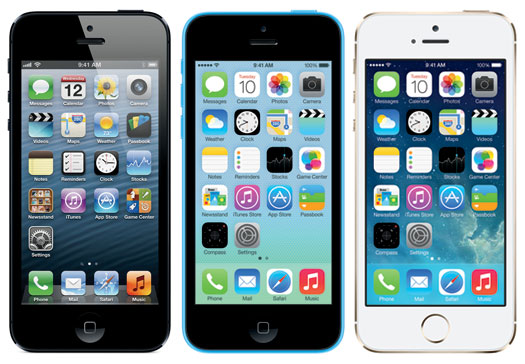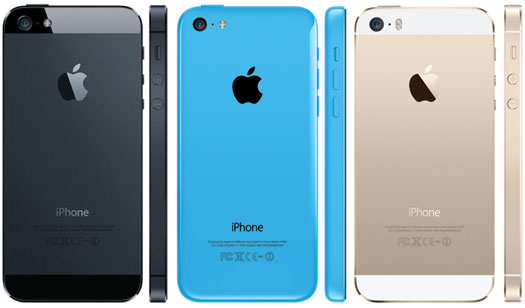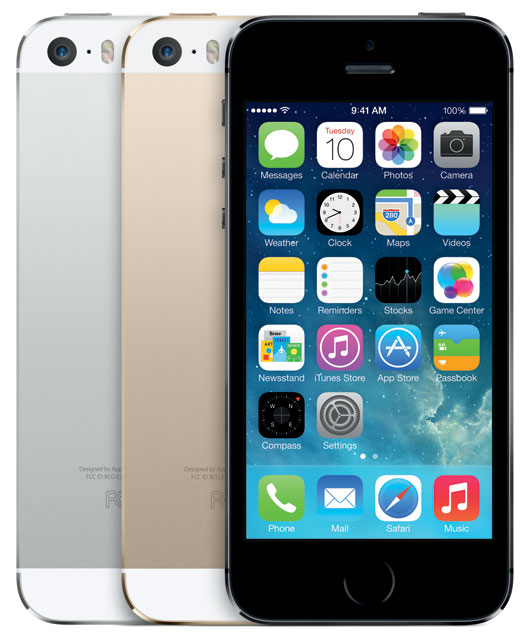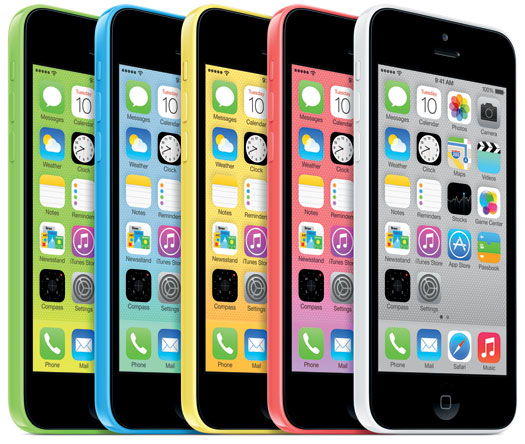How To Get More Storage On Iphone 5c
What are all the differences between the iPhone 5, iPhone 5c, and iPhone 5s? Are there major differences?
Please note that the iPhone 5, iPhone 5c, and iPhone 5s all have been discontinued. This Q&A has been updated with the latest iOS support details and more and can be quite helpful for anyone buying any of these models on the used market.
There are twenty one distinct iPhone 5, iPhone 5c, and iPhone 5s models and EveryiPhone.com has diligently documented each one as always. This Q&A primarily addresses collective differences for the sake of simplicity.
With a quick glance at the front of an iPhone from each line, it would be easy to mistake them for one another, but with more detailed evaluation, some differences become readily apparent. Other differences are not obvious but still are quite important.

Photo Credit: Apple, Inc. (iPhone 5 - Left, iPhone 5c - Center, iPhone 5s - Right)
External Differences
Perhaps the most immediately noticeable difference is that the iPhone 5s does not have a rounded square icon on the home button like the other two devices. Instead, it has a icon-free and less concave button with an embedded "Touch ID" fingerprint sensor. Consequently, the iPhone 5s can be configured with biometric identification rather than just a passcode.
Although the specific parts are different, the iPhone 5, iPhone 5c, and iPhone 5s all have a 4" multi-touch IPS LED-backlit 1136x640 (326 ppi) "Retina" display, and the front of each is glass. Otherwise, the housing is quite different, particularly for the iPhone 5c compared to the other two models.

Photo Credit: Apple, Inc. (iPhone 5 - Left, iPhone 5c - Center, iPhone 5s - Right)
The iPhone 5 and iPhone 5s both have a largely aluminum 0.30 of an inch thick case with a "chamfered cut" band around the edge, but the matte color options are different.
Specifically, the iPhone 5 has either a black glass front and a mostly black aluminum back or a white glass front and a mostly silver aluminum back.
The iPhone 5s models also are offered with a white glass front and a mostly silver aluminum back, but Apple replaced the black glass and black aluminum option with a black glass and medium colored gunmetal gray aluminum option that the company refers to as "Space Gray." Apple also added a new "Gold" option with a white glass front and a mostly gold colored aluminum back, but discontinued this option on September 9, 2015. Naturally, the Gold option remains available on the used market.

Photo Credit: Apple, Inc. (iPhone 5s Colors -- Silver, Gold, & Space Gray)
The iPhone 5c models, by contrast, are offered with a unique polycarbonate over steel body design in five glossy colors -- white, pink, yellow, blue, and green.

Photo Credit: Apple, Inc. (iPhone 5c Colors)
The iPhone 5c also is a bit thicker and heavier than the iPhone 5 and iPhone 5s. Most notably, the iPhone 5c is an extra 0.05 of an inch thick (1.37 mm) and weighs an extra 0.7 of an ounce (20 grams). Inconsequential differences to some, but worth mentioning nevertheless.
All iPhone 5, iPhone 5c, and iPhone 5s models additionally have a bottom mounted headphone jack, microphone, Lightning connector, and a single built-in speaker. They all have "EarPod" headphones that include the integrated Remote and Mic, too.
Camera Differences
The iPhone 5, iPhone 5c, and iPhone 5s all have dual cameras, but there are notable quality differences between them.
The front "FaceTime" cameras are similar in all three devices, and all have 1.2 megapixel sensors and shoot 720p video, but the iPhone 5 has 1.75µm pixels whereas the iPhone 5c and iPhone 5s have 1.9µm pixels, which as well documented by iLounge, means that in the real world the later models have improved low light performance, even if it can be subtle.
The back "iSight" cameras for the iPhone 5 and iPhone 5c are the same. Both shoot 1080p video and have an 8 megapixel sensor with an f/2.4 aperture, 1.4µm pixels, a five-element lens, a sapphire crystal lens cover, a single LED flash, and a hybrid IR filter. They both also support autofocus, tap to focus, face detection, Panorama mode, and photo geotagging.
The back camera for the iPhone 5s, however, is of significantly better quality even though Apple still dubs it "iSight" like the lesser models. It also has an 8 megapixel sensor, but it has 1.5µm pixels, for more detail and clarity. It also has an f/2.2 aperture (for more light) and a dual LED flash that Apple refers to as "True Tone." Apple claims that the True Tone flash provides more natural light than a traditional flash by variably adjusting "color and intensity for over 1,000 combinations."
The iPhone 5s has all of the other hardware and software features of the iPhone 5 and iPhone 5c camera, but also adds a "Burst mode" for still photos and a "Slo-mo" mode for video.
Identification Differences
It is simple to visually identify the iPhone 5, iPhone 5c, and iPhone 5s when all are side-by-side. The iPhone 5c is the only colorful polycarbonate one and although the iPhone 5 and iPhone 5s share very similar cases, the iPhone 5s can be spotted quickly by the distinctive "Touch ID" home button.
However, it is more difficult to visually identify the differences between the iPhone 5s and iPhone SE subsequently released, and easy to mix many of these models up when they are not next to one another.
Many of the devices can be identified by Model Number, which is listed on the back of each phone in tiny type, but not all can be individually identified in this way.
Nevertheless, the model numbers for the iPhone 5, iPhone 5c, and iPhone 5s are:
| iPhone | Model Number |
| 5 (GSM/LTE 4, 17/North America) | A1428 |
| 5 (CDMA/LTE, Sprint/Verizon/KDDI) | A1429 |
| 5 (GSM/LTE 1, 3, 5/International) | A1429 |
| 5 (CDMA China/UIM/WAPI) | A1442 |
| 5 (GSM/LTE/AWS/North America) | A1428 |
| 5c (GSM/North America/A1532) | A1532 |
| 5c (CDMA/Verizon/A1532) | A1532 |
| 5c (CDMA/China Telecom/A1532) | A1532 |
| 5c (CDMA/US/Japan/A1456) | A1456 |
| 5c (UK/Europe/Middle East/A1507) | A1507 |
| 5c (China Unicom/A1526) | A1526 |
| 5c (Asia Pacific/A1529) | A1529 |
| 5c (China Mobile/A1516) | A1516 |
| 5s (GSM/North America/A1533) | A1533 |
| 5s (CDMA/Verizon/A1533) | A1533 |
| 5s (CDMA/China Telecom/A1533) | A1533 |
| 5s (CDMA/US/Japan/A1453) | A1453 |
| 5s (UK/Europe/Middle East/A1457) | A1457 |
| 5s (China Unicom/A1528) | A1528 |
| 5s (Asia Pacific/A1530) | A1530 |
| 5s (China Mobile/A1518) | A1518 |
As is readily apparent from the above model numbers in italics, there are several iPhone 5, iPhone 5c, and iPhone 5s devices with overlapping model numbers. For the purpose of this Q&A, it may simply be sufficient to note that A1428 and A1429 refer to an iPhone 5, A1532 refers to an iPhone 5c, and A1533 refers to an iPhone 5s.
However, if you need to uniquely identify one of these iPhone models that share an external model number, they also can be pinpointed by other identifiers.
Specifically, EveryiPhone.com's Ultimate iLookup feature -- as well as the EveryMac app for iOS 5 or later -- can precisely identify these iPhone models by Order Number (referred to as "Model" within the iOS "Settings" app under General > About), and by their Serial Numbers, as well.
Battery Life Differences
Apple reports that all three of these iPhone models provide up to 40 hours of audio playback, 10 hours of video playback, and 10 hours of Wi-Fi, but provides different numbers for other usage.
Specifically, Apple estimates 8 hours of talk time on 3G and 8 hours of Internet use on 3G and 4G/LTE alike for the iPhone 5, but 8 hours of 3G use and 10 hours on Wi-Fi or 4G/LTE for the iPhone 5c and iPhone 5s.
As first reported by AnandTech, citing FCC filing documents, the iPhone 5c and iPhone 5s models have a larger capacity battery than their predecessor, so it is entirely logical that the battery runtime is longer.
Wireless Connectivity & Data Differences
All iPhone 5, iPhone 5c, and iPhone 5s models support GSM/EDGE (850, 900, 1800, 1900 MHz). With the official exception of the China Unicom and China Telecom models, all three lines support 4G/LTE, but different models support different LTE bands as well as other connectivity standards.
However, as first shared by a helpful Chinese reader "people have managed to crack the carrier settings and enable LTE-TDD" on China Mobile with the China Unicom iPhone 5c (A1526) and iPhone 5s (A1528), as well. This hack requires one to "write blank SIM cards with fake IMSIs, switch cards in a particular order, and manually select China Mobile as the carrier." Nevertheless, Apple also appears to be actively correcting "an issue with some iPhone 5s models that were mistakenly provisioned with the ability to connect to China Mobile's 4G network," as well. The cat and mouse game of hacks no doubt will continue.
Officially, different models support the following cellular connectivity:
| iPhone Model | Model Number | UMTS/HSPA+ DC-HSDPA | CDMA EV-DO | LTE Bands (4G) |
| 5 (GSM/N. America) | A1428 | 850, 900, 1900, 2100 MHz | None | 4, 17 |
| 5 (CDMA) | A1429 | 850, 900, 1900, 2100 MHz | 800, 1900, 2100 MHz | 1, 3, 5, 13, 25 |
| 5 (GSM/Intl) | A1429 | 850, 900, 1900, 2100 MHz | None | 1, 3, 5 |
| 5 (China) | A1442 | 850, 900, 1900, 2100 MHz | 800, 1900 MHz | None |
| 5 (GSM/AWS) | A1428 | 850, 900, 1700/2100, 1900, 2100 MHz | None | 4, 17 |
| 5c (GSM/N. America) | A1532 | 850, 900, 1700/2100, 1900, 2100 MHz | None | 1, 2, 3, 4, 5, 8, 13, 17, 19, 20, 25 |
| 5c (CDMA/VZ) | A1532 | 850, 900, 1700/2100, 1900, 2100 MHz | 800, 1700/2100, 1900, 2100 MHz | 1, 2, 3, 4, 5, 8, 13, 17, 19, 20, 25 |
| 5c (CDMA/China) | A1532 | 850, 900, 1700/2100, 1900, 2100 MHz | 800, 1700/2100, 1900, 2100 MHz | None |
| 5c (CDMA/US/JP) | A1456 | 850, 900, 1700/2100, 1900, 2100 MHz | 800, 1700/2100, 1900, 2100 MHz | 1, 2, 3, 4, 5, 8, 13, 17, 18, 19, 20, 25, 26 |
| 5c (UK/Europe) | A1507 | 850, 900, 1900, 2100 MHz | None | 1, 2, 3, 5, 7, 8, 20 |
| 5c (China Unicom) | A1526 | 850, 900, 1900, 2100 MHz | None | None |
| 5c (Asia Pacific) | A1529 | 850, 900, 1900, 2100 MHz | None | FDD-LTE (1, 2, 3, 5, 7, 8, 20); TD-LTE (38, 39, 40) |
| 5c (China Mobile) | A1516 | 850, 900, 1900, 2100 MHz | None | TD-SCDMA 1900 (F), 2000 (A); TD-LTE (38, 39, 40) |
| 5s (GSM/N. America) | A1533 | 850, 900, 1700/2100, 1900, 2100 MHz | None | 1, 2, 3, 4, 5, 8, 13, 17, 19, 20, 25 |
| 5s (CDMA/VZ) | A1533 | 850, 900, 1700/2100, 1900, 2100 MHz | 800, 1700/2100, 1900, 2100 MHz | 1, 2, 3, 4, 5, 8, 13, 17, 19, 20, 25 |
| 5s (CDMA/China) | A1533 | 850, 900, 1700/2100, 1900, 2100 MHz | 800, 1700/2100, 1900, 2100 MHz | None |
| 5s (CDMA/US/JP) | A1453 | 850, 900, 1700/2100, 1900, 2100 MHz | 800, 1700/2100, 1900, 2100 MHz | 1, 2, 3, 4, 5, 8, 13, 17, 18, 19, 20, 25, 26 |
| 5s (UK/Europe) | A1457 | 850, 900, 1900, 2100 MHz | None | 1, 2, 3, 5, 7, 8, 20 |
| 5s (China Unicom) | A1528 | 850, 900, 1900, 2100 MHz | None | None |
| 5s (Asia Pacific) | A1530 | 850, 900, 1900, 2100 MHz | None | FDD-LTE (1, 2, 3, 5, 7, 8, 20); TD-LTE (38, 39, 40) |
| 5s (China Mobile) | A1518 | 850, 900, 1900, 2100 MHz | None | TD-SCDMA 1900 (F), 2000 (A); TD-LTE (38, 39, 40) |
Internal Differences
The iPhone 5 and iPhone 5c are both powered by a dual core 1.3 GHz Apple A6 processor and have 1 GB of RAM.
Apple notes that the iPhone 5s has a 64-bit "Apple A7" processor and an "M7 motion coprocessor." Apple does not provide additional technical details, but the always excellent AnandTech was first to determine that the Apple A7 processor is a ARMv8 derivative of Apple's "Swift" dual core architecture called "Cyclone" and it runs at 1.3 GHz. It also is 28 nm, has a 64k/64k level 1 (instruction/data) cache and a 1 MB level 2 cache. AnandTech reported that the iPhone 5s models have 1 GB of RAM, too.
The iPhone 5 and iPhone 5s have 16 GB, 32 GB, or 64 GB of flash storage whereas the iPhone 5c have 8 GB, 16 GB, or 32 GB.
Originally, the iPhone 5c models shipped with 16 GB or 32 GB of storage, but on March 18, 2014, Apple added an 8 GB option, only in the UK, France, Germany, Australia, and China. On April 16, 2014, as first spotted by 9to5Mac, Apple quietly added the 8 GB iPhone 5c model in Austria, Belgium, the Czech Republic, Denmark, Finland, Hungary, Italy, Ireland, Luxembourg, the Netherlands, Norway, Poland, Portugal, Spain, Sweden, and Switzerland.
On September 9, 2014, Apple rolled out the 8 GB configuration of the iPhone 5c worldwide and discontinued the 16 GB and 32 GB options. Apple also discontinued the 64 GB configurations of the iPhone 5s. On September 9, 2015, Apple discontinued the iPhone 5c altogether.
Finally, on March 21, 2016, Apple discontinued the iPhone 5s.
Of course, on the used market, all models are available.
iOS Support Differences
The iPhone 5 models support iOS 6, iOS 7, iOS 8, iOS 9, and iOS 10; the iPhone 5c models support iOS 7, iOS 8, iOS 9, and iOS 10; and the iPhone 5s models support iOS 7, iOS 8, iOS 9, iOS 10, iOS 11, and iOS 12.
Running iOS 10, none of three support the minor "Raise to Wake" feature. The iPhone 5 and iPhone 5c do not support Rich Notifications, either. The iPhone 5 and iPhone 5c are not capable of running iOS 11 or later at all whereas the iPhone 5s are not capable of running iOS 13 or later at all.
Also note that if any of these iPhone models have been updated to a later version of the iOS it is not simple to "downgrade" to an earlier version without resorting to "jailbreaks" or other hacks.
It also is worth noting that the iPhone 5 is noticeably slower running iOS 9 (and later) and the iPhone 5c is so similar internally that it likewise is slower running iOS 9 or iOS 10 than earlier versions of the operating system. This performance difference is well demonstrated by iAppleBytes in the below video:
The iPhone 5s, by contrast, is essentially the same speed running iOS 8, iOS 9, and iOS 10. It is noticeably slower running iOS 11 but faster when running iOS 12. It also supports "Facedown detection" whereas the iPhone 5 and iPhone 5c do not.
Regardless of operating system, it additionally is worth noting that FaceTime audio does not work on the Chinese models due to state restrictions on VOIP services.
Comparison Chart
These differences -- materials, biometrics, cameras, identifiers, battery life, connectivity, processor, and storage -- along with pricing information are summarized below for your convenience:
| iPhone |  5 |  5c |  5s |
|---|---|---|---|
| Intro Date: | Sept. 12, 2012 | Sept. 10, 2013 | Sept. 10, 2013 |
| Disc Date: | Sept. 10, 2013 | Sept. 9, 2015 | Mar. 21, 2016 |
| Processor: | Apple A6 | Apple A6 | Apple A7 |
| Cores: | Dual Cores | Dual Cores | Dual Cores |
| Coprocessor: | None | None | Apple M7 |
| Storage: | 16, 32, 64 GB | 16, 32 GB | 16, 32, 64 GB |
| RAM: | 1 GB | 1 GB | 1 GB |
| GSM/EDGE: | Yes | Yes | Yes |
| UMTS: | Yes | Yes | Yes |
| HSDPA: | Yes (DC-HSPDA) | Yes (DC-HSPDA) | Yes (DC-HSPDA) |
| HSUPA: | Yes | Yes | Yes |
| EV-DO: | Some Models | Some Models | Some Models |
| 4G/LTE: | Yes (Most Models) | Yes (Most Models) | Yes (Most Models) |
| Bluetooth: | 4.0 | 4.0 | 4.0 |
| GPS: | GPS/GLONASS | GPS/GLONASS | GPS/GLONASS |
| 802.11n: | 2.4 GHz/5 GHz | 2.4 GHz/5 GHz | 2.4 GHz/5 GHz |
| Talk Time (3G): | 8 Hours | 10 Hours | 10 Hours |
| Battery (Web - 3G): | 8 Hours | 10 Hours | 10 Hours |
| Battery (Web - 4G): | 8 Hours | 10 Hours | 10 Hours |
| Battery (Wi-Fi): | 10 Hours | 10 Hours | 10 Hours |
| Battery (Music): | 40 Hours | 40 Hours | 40 Hours |
| Battery (Video): | 10 Hours | 10 Hours | 10 Hours |
| Standby Time: | 225 Hours | 250 Hours | 250 Hours |
| SIM Card: | Nano | Nano | Nano |
| Original OS: | iOS 6 | iOS 7 | iOS 7 |
| Fastest OS: | iOS 8 | iOS 8 | iOS 9/10 |
| Maximum OS: | iOS 10 | iOS 10 | iOS 12 |
| Facedown: | No | No | Yes |
| Biometrics: | No | No | Touch ID |
| Front Camera: | 1.2 Megapixels (1.75µm) | 1.2 Megapixels (1.9µm) | 1.2 Megapixels (1.9µm) |
| Rear Camera: | 8 Megapixels (1.4µm) | 8 Megapixels (1.4µm) | 8 Megapixels (1.5µm) |
| Aperture (Rear): | f/2.4 | f/2.4 | f/2.2 |
| LED Flash (Rear): | Single | Single | Dual (True Tone) |
| Panorama: | Yes | Yes | Yes |
| Slo-Mo: | No | No | Yes |
| Burst Mode: | No | No | Yes |
| Materials: | Glass/Aluminum | Polycarbonate/Steel | Glass/Aluminum |
| Dimensions: | 4.87 x 2.31 x 0.30* | 4.90 x 2.33 x 0.35* | 4.87 x 2.31 x 0.30* |
| Weight: | 3.95 oz. (112 g) | 4.65 oz. (132 g) | 3.95 oz. (112 g) |
| Model No: | A1428/A1429 A1442 | A1532/A1456 A1507/A1529 | A1533/A1453 A1457/A1530 |
| Intro Price: | US$199, $299, $399† | US$99, $199† | US$199, $299, $399† |
* In inches, height x width x depth.
† These prices all required a two-year contract in the US. Unlocked and contract free iPhone models are available at a premium. Pricing varies by country and carrier internationally.
For intro pricing in dozens of other countries, see the "Global Prices" on the specs page for each iPhone as well as the "By Global Original Prices" section of Everyi.com.
So, should I buy an iPhone 5, iPhone 5c, or iPhone 5s? Which is best for me?
Although all are discontinued, the iPhone 5, iPhone 5c, and iPhone 5s models remain fairly capable and the decision on the used market likely will come down to whether performance, appearance, operating system support, or price are most important to you.
Of course, if a bigger display, faster performance, better cameras, NFC capability, and/or other improvements are important to you, and upfront price is less important, you might also want to consider a newer iPhone model.
Accordingly, if you're on a tight budget or prefer a smaller mobile, you might like to review the differences between the iPhone 5, iPhone 5s and the newer iPhone SE, which effectively is an upgraded iPhone 5s.
Just comparing the iPhone 5, iPhone 5c, and iPhone 5s, rather than also considering newer models, and if you want your iPhone to be usable for as long as possible from the date of purchase, and both speed and camera quality are important to you, the iPhone 5s is the clear choice as it at least it offers support for iOS 12 (but not the current version of the iOS). Of these three options, you also may find the iPhone 5s the best choice simply because you like the "pimp" gold color option, or if you find yourself forgetting your passcode on a regular basis and a biometric fingerprint unlock option would be particularly handy.
If upfront price is more of a concern or you like a bright "candy colored" design, and performance and the camera are less important, the iPhone 5c is a solid choice. Of course, internally, the iPhone 5c is quite similar to the even older iPhone 5, and if you prefer a more subdued design and an even lower price tag, the iPhone 5 remains well worth consideration, too. These older models do not support operating systems beyond iOS 10, though, and with such dated iOS support, many current apps no longer will work. If there is a particular app that you must have -- especially a chat, communication, or social media app -- be sure to verify that the current version is compatible with iOS 10 before purchasing your device.
iPhone Purchase & Sale Options
There are no shortage of places to buy a new or used iPhone. However, buying your iPhone from a quality company with extensive knowledge -- and after sales support -- will provide the best experience and save you money and time, too.
In the US, site sponsor OWC sells used iPhone models to individuals and Evertek sells used iPhone models to business customers (and ships bulk orders to wholesale customers worldwide).
Site sponsor GoRoostr can buy your older iPhone. GoRoostr has an A+ rating with the BBB, offers an instant price quote, free and insured FedEx shipping, and provides same day payouts 95% of the time.
In Australia, site sponsor Mac City likewise has a variety of used iPhone models sold at low prices and available with a free warranty and fast shipping across Australia.
Please also see EveryiPhone.com's Ultimate iComparison feature to dynamically compare any iPhone model to any other iPod, iPhone, or iPad.
Also see:
- What are all the differences between the iPhone 5 models?
- What are all the differences between the iPhone 5c models?
- What are all the differences between the iPhone 5s models?
- What are all the differences between the iPhone 6 and iPhone 6 Plus and the earlier iPhone 5, iPhone 5c, and iPhone 5s? Are any of these models still a good choice?
- What are all the differences between the iPhone SE and the older iPhone 5 and iPhone 5s models? Which is best for me?
EveryMac.com and EveryiPhone.com are provided "as is" without warranty of any kind whatsoever. EveryMac.com, EveryiPhone.com, and the author thereof, shall not be held responsible or liable, under any circumstances, for any damages resulting from the use or inability to use the information within. For complete disclaimer and copyright information please read and understand the Terms of Use and the Privacy Policy before using either website. Use of any content or images without expressed permission is not allowed, although links to any page are welcomed and appreciated.
How To Get More Storage On Iphone 5c
Source: https://everymac.com/systems/apple/iphone/iphone-faq/differences-between-iphone-5c-iphone-5s-iphone-5.html
Posted by: matticegooked1970.blogspot.com

0 Response to "How To Get More Storage On Iphone 5c"
Post a Comment